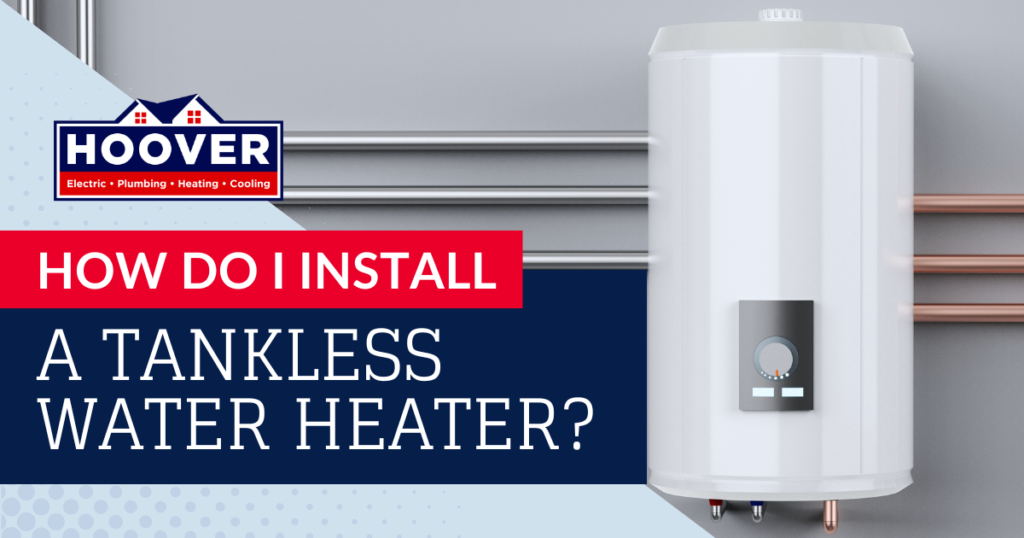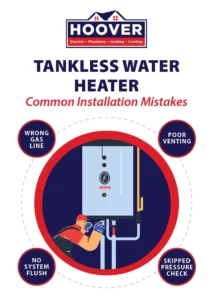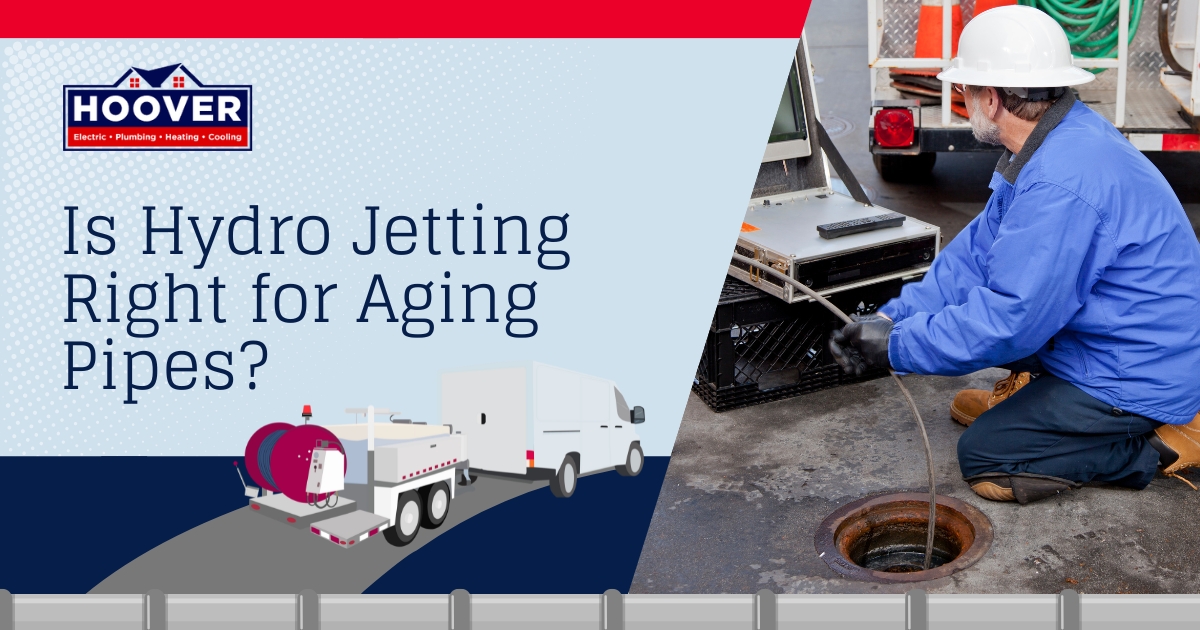
The average winter temperatures in Southeast Michigan can dip down into the teens, which means it’s important to have a water heater you can rely on. One popular choice for many homeowners is a tankless water heater, which provides hot water on demand. If you’re curious about the process of tankless water heater installation, the experts at Hoover Electric, Plumbing, Heating, and Cooling have some helpful information so you know how to prepare and properly set up the system.
What You Need to Know Before Installing a Tankless Water Heater
Before you begin the tankless hot water heater installation process, there are some important things you should know.
What Is a tankless water heater?
Unlike traditional water heaters that store water inside a tank, a tankless water heater produces hot water only when you need it. When you turn on the tap, a sensor detects the water and sends a signal that tells the heater to activate. Many people opt to switch to a tankless system because it’s more energy-efficient than a traditional water heater. There’s also no tank to worry about, which saves space and can ebb concerns about the tank bursting and leaking or breaking down.
Gas vs. electric tankless water heaters: which one to choose?
A gas tankless water heater is connected to your home’s natural gas line, while an electric version connects to your home’s electrical system. If you don’t have an existing gas line, it’s easier and less expensive to install an electric tankless heater. However, natural gas costs less than electricity, and most gas tankless water heaters are more efficient overall. Weigh your upfront versus long-term costs to decide which option is right for you.
Tools and materials needed for installation
You’ll need a few specific tools to install a tankless water heater, including a pipe wrench, pipe cutters, a drill, plumbing and electrical tape, and several other essential tools. Aside from the tools, there are several important materials you’ll need for a successful installation. This includes the heater itself, venting pipes, specific fittings, and electrical wiring, to name a few.
Do you need a permit to install a tankless water heater?
Most municipalities require you to get a permit to install a tankless water heater. You’ll need to make sure you follow all local and electrical code requirements. Not only can the professionals at Hoover obtain all the necessary permits, but they have the knowledge and expertise to install your new tankless water heater safely and correctly.
Step-by-Step Guide to Installing a Tankless Water Heater
You can install a tankless water heater yourself, but it’s a complex process that’s best left to trained professionals. It takes approximately four to six hours to install a new tankless water heater, and approximately one to three hours to replace an existing tankless unit. Here are the steps to install a tankless water heater.
- Step one: Choose the right location for maximum efficiency and easy accessibility, ensuring that you have adequate clearance, and make sure that you install an indoor water heater near the bathroom or kitchen and an outdoor unit in a sheltered area near the main point of water use.
- Step two: Turn off the power at the circuit breaker and turn the gas and water supply off using the knob at the main supply lines.
- Step three: Drain the existing water tank by unscrewing the connecting pipes and using a hose and a bucket to collect the water, remove old wiring and brackets, and bring the old unit to a recycling center for safe disposal.
- Step four: Mount the tankless water heater on a wall with ample clearance using the included mount and screws, ensuring that everything is level and securely attached. Floor mounting is not recommended.
- Step five: Start the tankless water heater hookup by connecting the water pipes to the ports at the bottom of the unit and the water supply lines using stainless steel flexible pipe (ideal) or use a PVC-to-copper connection for copper piping, then install the shut-off valves and pressure regulator.
- Step six: Check gas line sizing — these are usually larger for tankless water heaters. Also check the pressure requirements before connecting the gas line using a flexible connector.
- Step seven: Install a direct gas vent system to pull air from outside, or a power vent which uses a fan to exhaust the gas, and properly route the connected vent pipes through the wall or roof.
- Step eight: Verify the correct voltage and amperage requirements for electric models and connect the breaker and wiring by verifying each wire is in the correct terminal.
- Step nine: Turn the circuit breaker (or gas) and water supply back on and set the temperature to test the water heater, then check all hot water outlets to determine whether you need to make any adjustments.
Common Mistakes to Avoid When Installing a Tankless Water Heater

Here are some common mistakes to avoid when installing a tankless water heater.
- Using the incorrect gas line size for gas tankless water heater connections can cause performance issues like inadequate efficiency, corrosion, and gas supply shortages.
- Improper or poor ventilation design and setup can lead to serious risks like carbon monoxide buildup.
- Failing to flush the system before use can cause excess sediment buildup and shorten the unit’s lifespan.
- Skipping the water pressure check can cause it to be too high or low, either of which may damage your new tankless water heater.
Maintenance Tips to Keep Your Tankless Water Heater Running Efficiently
Remember these maintenance tips to keep your tankless water heater running efficiently.
- Flush and descale: Occasionally drain, flush, and refill your water heater to descale it and remove excess mineral buildup.
- Check filters: Routinely check your tankless water heater filter and clean or replace it as needed to prevent clogs.
- Adjust temperature settings: You may need to adjust your water heater’s temperature settings until you find the optimum balance between comfort and energy savings.
Call Hoover Today!
From a professional tankless water heater plumbing setup and installation to repairs, count on the experts at Hoover Electric, Plumbing, Heating, and Cooling for reliable service. We proudly provide a range of services to our customers throughout the Southeast Michigan area. If you’re interested in a new tankless water heater for your home, contact us to schedule service today!


